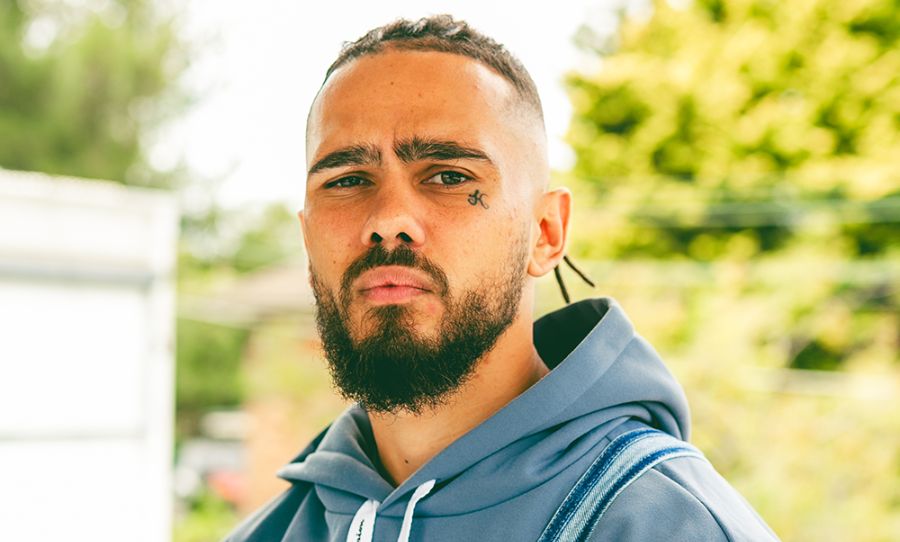Owen Penglis is the man behind some of the best rock records to come out of Australia in the past decade. From his own project Straight Arrows to blistering releases from the likes of Palms and Royal Headache, his proclivity (and prowess) for crafting raw, visceral garage rock has made him one of the most sought after producers in the genre.
Currently, he’s working out of a space in the basement of a sprawling sandstone mansion in Sydney’s Kings Cross, but this wasn’t always the case. Like so many artists, engineers and producers, Penglis cut his teeth on a battered 4 track in the lounge room of his share house. It was here he recorded the majority of Straight Arrows’ early material, plus more bands than he can remember (The Frowning Clouds, Bloods, Violent Soho, and The Living Eyes to name a few).
We caught up with Owen to try and coax some stories out of him from his lounge room days; the gear that shaped those records, navigating housemates, neighbours and police, and the luxury (and magic) of being able to work in your pyjamas.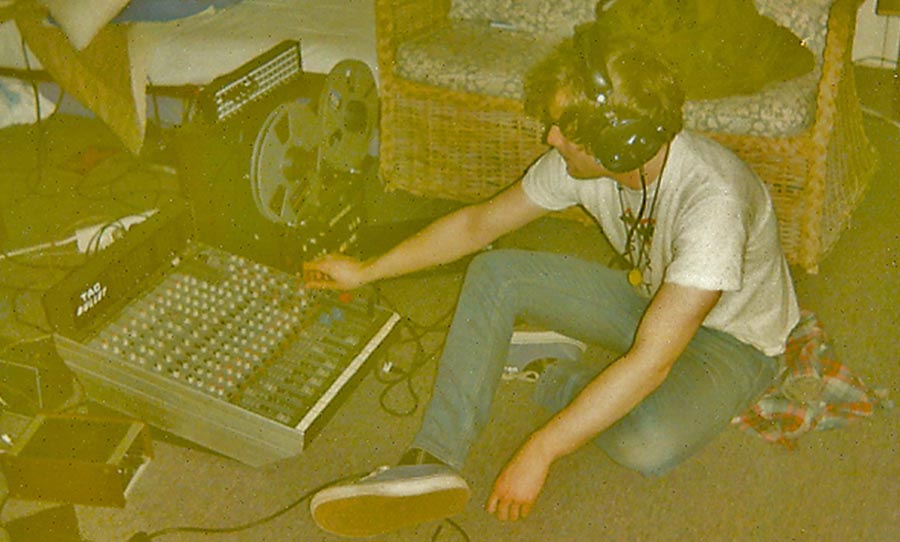
Owen Penglis cracks open the vault and shares some stories of his days recording bands like Palms, Royal Headache and The Frowning Clouds in his lounge room, wearing out tape machines, and getting shit done in his pyjamas.
ENMORE AUDIO: Hey Owen, how’s it going? What are you up to at the moment?
OWEN: Hey Nick – I’m well! Busy as usual I guess. On top of all the regular recording and mixing stuff I’m working through a Straight Arrows LP at the moment. There’s a single off at the plant (5 month waiting time…sheeeeeeesh….our first 45 was turned around in a week!), and it’s looking like 2018 is gonna be a busy year.
ENMORE AUDIO: Nice one. Tell us a bit about how you first got into recording?
OWEN: I started out recording my shitty high school band on a boom box, then moved onto 4 track cassette. I tried going to university and doing music stuff but ended up hating the modern recording approach and sound of computers so much that I gave it all up and became a mechanic. Eventually I borrowed another 4 track a couple years later and started again from the bottom.
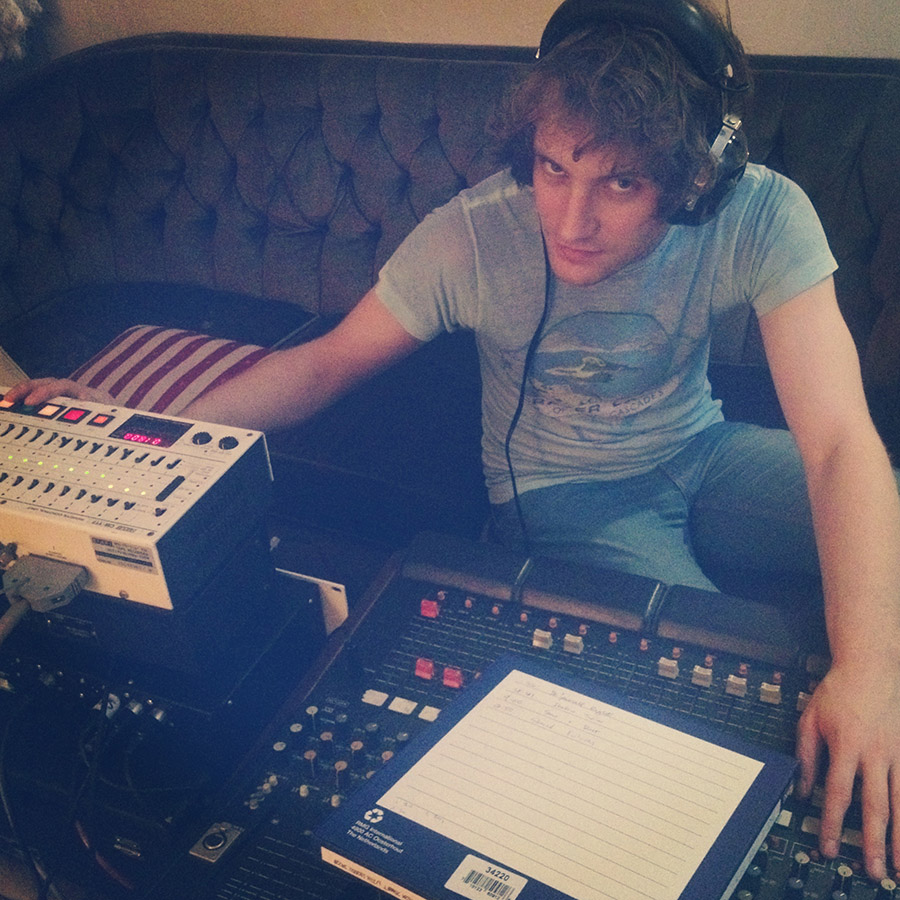
ENMORE AUDIO: You first started recording bands in your lounge room. Can you paint us a picture of what the space was like?
OWEN: That was a pretty fun and wild time, and I do feel kinda bad for my housemates who had to live with me through that period. The set up was generally drums in the kitchen on a rug (that room has a great ‘liveliness’ to it…though sucks when your housemate wakes up mid-session and wants to cook breakfast when there’s a drummer in front of the stove); anything that had an amp in the lounge room and mic up for best separation or ’til it all sounds right; make sure everyone can see each other, and the session was ready to roll.
It started out on 4 track cassette, then I got the opportunity to buy the 8 track tape machine from the studio that we recorded the first Straight Arrows LP at, so that thing moved in under the stairs. I’d generally sit in the middle of the room with an enormous pair of quadrophonic headphones on, and monitor from there. Somehow I made it work and people kept coming over to record.
In the later days at the house I ended up with a big mixing desk in my bedroom upstairs, which became the control room – I’d run masses of cables down the stairs to the tape machine and the mics and run up and down to monitor levels on the machine.
ENMORE AUDIO: Aside from pissing off your housemates, how the hell did you did manage to pull this off with your neighbours?
OWEN: Well, for a while no one on this street of old terrace houses seemed to care. I’d make sure I didn’t start early (fuck that!) and finished at least doing drums or loud amplified stuff by mid-afternoon, and everyone on the street seemed fine with it. Hell, people would come past and compliment the bands occasionally – it was really nice.
Every now and then I’d drop by my immediate neighbours’ place (the ones that we shared walls with) and give ’em a six pack – they were mostly party share houses so they weren’t fussed. Until one day a new lady moved in next door and went absolutely bananas – called the police, came around and yelled at me and the band two days in a row, and generally made things difficult, so I had to reconsider how I was going to do this. Luckily I found a more legit studio space a couple of weeks later, and I’m still there.
ENMORE AUDIO: The first Palms record was tracked entirely in your lounge room right? Can you tell us a bit about some of the gear that shaped that album?
OWEN: That was a really fun record to make, and we did it pretty gradually. They first came over to do a couple of demos – they’d done some stuff at a legit studio and weren’t too happy with how it sounded, so they thought they’d give me a try.
They ended up so happy with how these ‘demos’ came out, they sent them to radio and somehow these tracks I’d recorded on cassette (the first lot on a crappy Yamaha MT400 deck, with a single mic on the drums) ended up on high rotation! That was The Summer Is Done With Us – we also did another four songs at that time, nearly all of which ended up on their first LP.
Since that session went so well and they wanted to come back for more demo-ing I figured I’d upgrade, so bought a Tascam 244 4 track from a friend, and got a second mic for the drumkit, and did their next single Love and another handful of tracks. Eventually I got an Otari MX70 1/2″ 8 track and recorded the following single, This Last Year, which came out incredibly well, along with all the leftover tracks to complete the album.
Gear-wise, there wasn’t anything too special – I think the two effects boxes I used were a Roland RV-100 spring reverb, an SRE-555 Space Echo, and a wooden-sided Panasonic/Ramsa mixing board I bought from an old Telstra technician that they used to do their hold message recordings through. I probably also had a Sebatron 4 channel tube pre-amp by this stage.
It was pretty funny sitting in on the mastering session for the album, watching William Bowden trying to reconcile these bunches of recordings from three different tape sources into an LP. I’ve gotta say, the man did a great job.

ENMORE AUDIO: What exactly drew you towards tape in your early days? Does digital work its way into your workflow at all?
OWEN: After experiencing the world of the latest direct-to-computer recording technology I decided that it wasn’t for me – especially when I reckoned I could make a cassette sound better, or at least more lively, than a Pro Tools session. If there was a computer that sounded better than a tape machine I’d use it, but so far I’ve not been convinced. Not that I’m completely against computers in recording.
I track to 1-inch 8 track, and usually mix all analog too – however for some sessions with picky bands you really need the recall of digital, so I’ll bounce the tape to computer and mix on there. The last thing I want to do is spend all day recreating an analog mix so some finicky guitarist can hear themselves a touch louder in the second verse. But in doing that I’ll use as much outboard equipment as necessary – nothing beats fooling around with real effects units.
When I’m working all analog, I’ll usually do for to five mixes of each song, record them into the computer as a stereo file, and let the band decide which they like best. Usually they’ll be sitting in with me while I direct everyone to move the faders up and down throughout the mixes.
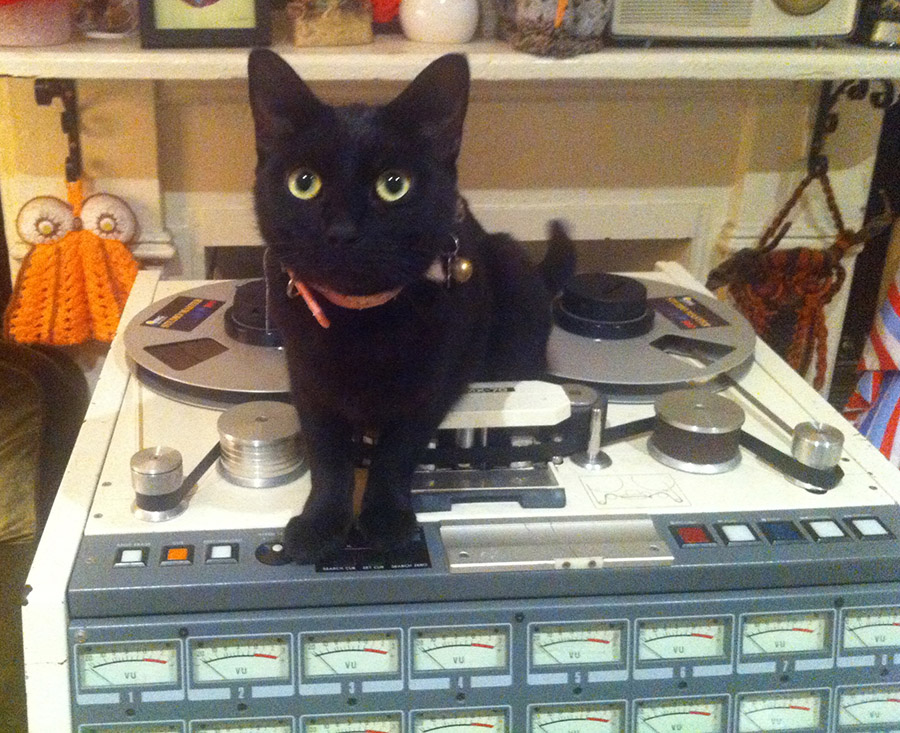
ENMORE AUDIO: All Night Long – one of my favourite tracks by the Frowning Clouds – was recorded in the lounge room too right? So much live vibe. Tell us about this session.
OWEN: The thing about those guys it that they’re such good players that have pretty much perfected that mid-60s style that I didn’t have to work too hard. I didn’t have too many mics at the time, so just used one SM58 on the drums, some other crappy dynamics on the other stuff, and an Electro-voice 630 on lead guitar, and all the vocals.
I remember trying to squeeze everything onto the 4 track in one go to avoid bouncing channels, so I’m pretty sure drums and rhythm guitar had to share a channel, with bass and lead on another, then lead vox on another, and b-vox and percussion all at the same time on the last – you can hear me scream from my side of the room in the opening chords too, that’s how close we were all jammed in there.
It was a lot of moving mics, amps, and players into the right spaces and balancing levels to get it all right ’cause we couldn’t go back and fix anything in the mix. Although I did end up speeding up the tape to give the track a bit more energy – now they play it live at that faster speed, and shift it up a couple of keys to sound like the recording. It was a very relaxed session, and while it’s probably not sounding technically ‘right’, something was really working that day, between the band, me, and, at the time, my pile of equipment that looked like it came from the bin outside an op shop.
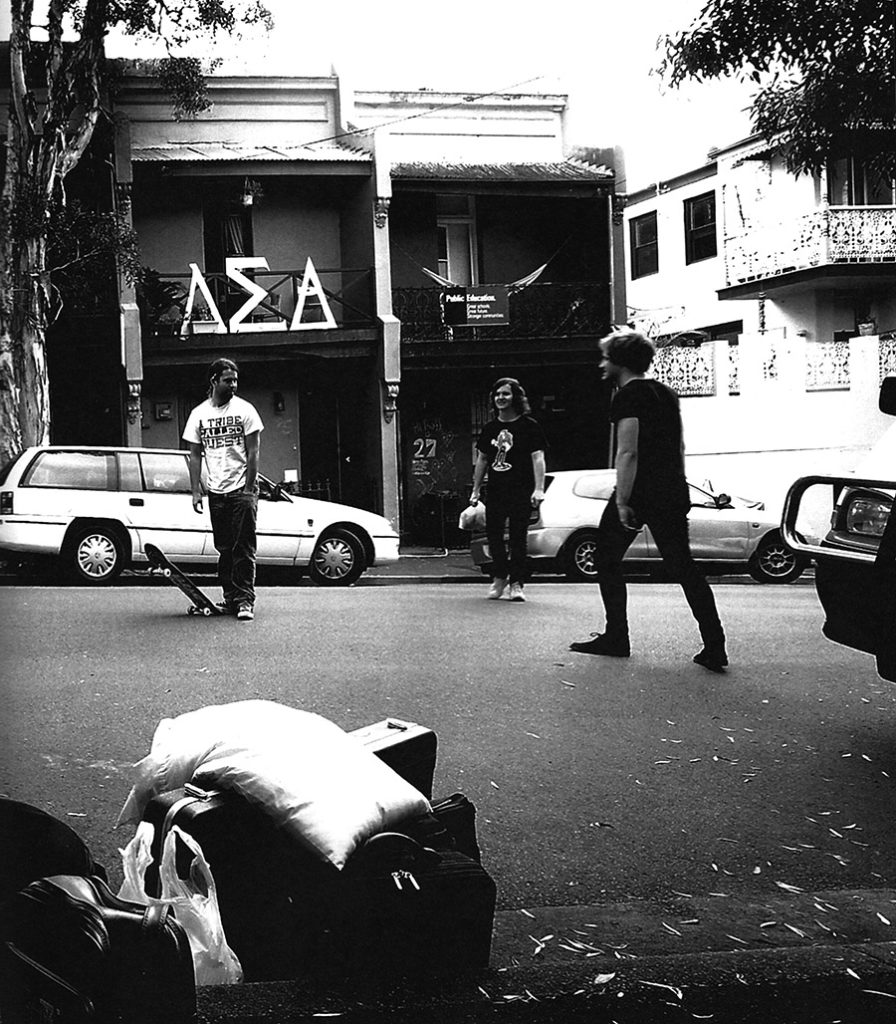
ENMORE AUDIO: All that fuzz were hearing there – is that all overblown analog stuff? How do you balance that level of distortion and keeping it coherent?
OWEN: At that time I felt like I was engulfed in a world of shitty, lifeless digital recordings – everything that I was hearing on the radio by supposed rock bands sounded so horrible, so this was my reaction I guess.
I was blasting things with the 4 track (there’s a real sweet spot on the preamps on those things, plus the cassette has a nice saturation and compression to it too), and a Roland spring box (love those things!) that can drive levels very nicely. You’ve just got to experiment and listen.
ENMORE AUDIO: You’ve worked quite a bit with Royal Headache too, mostly on vocals. How did you end up working on their first LP?
OWEN: I recorded the first Royal Headache EP at guitarist Lawrence’s parent’s boatshed in their backyard a couple of years beforehand – it was mostly on equipment I was unfamiliar with so I don’t know if it’s my best work – but people seemed to really love that EP. It certainly helps that the songs are all great.
They went to Melbourne to record their first LP and didn’t manage to get the vocals done, then came back to town and went through 3 or 4 other guys and still couldn’t get it right. Shogun ended up coming over to my place to give it a try and it just gelled. They had all the instrumental tracks on a CD, so I copied them all to one channel of a 2 track 1/4 inch Revox B77, and had Shogun sing on the other channel.
ENMORE AUDIO: Was that was all tracked in your lounge room too? What were those sessions like?
OWEN: These ones we mostly did sitting on my bed in my room – Shogun’s got a lot of strong ideas, and I guess I do too, so we butt heads a lot when it comes to the recording process – how things are sung, even some lyrics, but at the end of the day we clock off and go to the pub for a drink. It’s like what I imagine the Roadrunner and Wile E. Coyote do after a long day of filming their adventures in the desert.
He’s a pretty particular guy so we’d do take after take, for days – and we would probably still be going if the Revox motor hadn’t completely shat itself by the end. I really had to coax that machine to get the sessions back off of it.
ENMORE AUDIO: There’s so much vibe in those takes. Were there any techniques or specific pieces of gear that really shaped the sound of those songs?
OWEN: Nothing more than pushing the Revox until it sounded right for the songs – hitting the red just right for each track when necessary. I’m pretty sure it was all into an SM58 too. But the main thing is Shogun’s got an incredible voice.
Sometimes I’d have to coax a performance out of him, but we seem to work pretty well in that way, even if sometimes we’re at total odds and having what might seem like a huge argument. At the end of the day we’re usually square again.
ENMORE AUDIO: Sounds like What other fond do you have of working in that space?
OWEN: I’m trying to remember all of the bands I did there – stuff like The Living Eyes, Circle Pit, Ruined Fortune, Yes Nukes, The Nugs, The Bonniwells, Bachelor Pad, Bloods, The Knits. I’m sure there’s a whole heap more. I also did a couple of demos for Violent Soho, back when they’d swing through town and stay in my lounge room seemingly every few weeks on tour.
Myself and a buddy once stayed up all night drinking and watching Animal House on repeat and decided to call the place Lambda Sigma Delta house – as much as we hated the idea of frat houses and the turds that seem to occupy them, it seemed like a great stupid thing to do. He even surprised me with these ridiculous 1 meter high Greek letters for L.S.D he cut out of crates at work – we had them nailed to the front balcony for years and they caused us all sorts of problems. Anyways, that ended up as the name of the studio at one point.
ENMORE AUDIO: Where are you working now? Is there anything you miss about doing everything at home?
OWEN: Now I’ve got a space in Kings Cross I call ‘Goliath Professional Recording Studio’. As for the house, I still live here and will occasionally do a demo or two there for myself, but I don’t really miss waking up inspired at 3am to try out a few mix ideas before heading back to bed. I do sometimes miss the working environment that was the situation of trying to do the best work I could with whatever crappy, borrowed, and consumer-grade equipment I could get my hands on at the time.
But the thing I legitimately miss the most is being able to get up and work in my pyjamas – it lead to some very relaxed sessions; the bands are usually pretty relaxed when they see the engineer swanning about in a nice dressing gown. I should probably get a set for my studio now.

